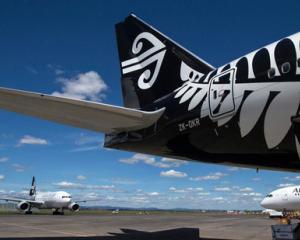Project Gateway was a bright idea to bolster Dunedin and foster links with the big cities of the east coast of Australia.
The initiative was launched by Dunedin International Airport Ltd in 1998, and adopted by the Dunedin City Council in partnership with the airport, Tourism Dunedin, the Otago Chamber of Commerce and the University of Otago.
Sydney and Melbourne provide much potential for further business links as the biggest and wealthiest cities of the South Pacific. Tourist traffic from Australia has increased, and it would seem reasonable for Dunedin to try to secure its share. One of the keys, though, was always going to be air links. If they are cheap and convenient that will help both tourism and business.
Project Gateway also has had a grant system to help Dunedin industry travel to trade fairs or for marketing visits, and at least one major function has been hosted in Australia. In its early years there was an enthusiasm to try to help make things happen even if the results were patchy.
Although air services across the Tasman have burgeoned, by the mid 2000s the project was still falling well short of its lofty goals.
Those early hopes had been to attract 60,000 visitors a year, creating 555 jobs and opening up a market worth $21 million.
Information supplied this week to this newspaper shows that the overall cost in the past decade has been $3.5 million, that the scheme had helped create "around 34 jobs" and that it sparked sales of only $4.6 million.
There are serious difficulties measuring the success or failure of such projects.
What, for example, does helping create jobs actually mean? Was a relatively small subsidy (for a subsidy is what it is) for a business that expanded really crucial in its success? Similarly, the project's role in air freight and passenger flight links is hard to ascertain.
Based on these results, the project looks like an utter flop.
Airlines could not be persuaded to abandon their Christchurch airfreight hub and transtasman flight numbers from Momona have fallen away. In both cases, Dunedin and its airport were at the mercy of the airlines.
Air New Zealand's profitable subsidiary, Freedom Air, was flying along quite nicely and by 2005 had flights to Sydney scheduled three days a week. A daily service, the aim of Project Gateway, looked possible. Coolangatta got on to the timetable as had Melbourne.
But Air New Zealand subsumed Freedom Air and Air New Zealand flights withered. Intense transtasman competition out of Christchurch meant that was where Air New Zealand felt it had to compete vigorously.
That was where the cheap flights could be caught and therefore where the passengers would go. Project Gateway also pursued a Queenstown link through Mainland Air. But it failed to attract sufficient patronage and stopped.
Project Gateway came under criticism in 2006 when its goals looked well and truly unattainable, although in those heady times of growing air links deputy mayor Syd Brown called it "phenomenally successful by any measure".
The year before, airport chairman Cr Richard Walls wrote: "We have made a sustained, vigorous and successful assault on the Australian travel industry through Project Gateway." What a contrast to this week with a council report admitting some of the original goals had been very challenging.
It proposed that Project Gateway be put "on hold" and reviewed. Its continuing aims could be dealt with by the airport company and Tourism Dunedin.
Perhaps programmes like Project Gateway can play a positive part with developments that teeter on happening. But as is clear with the air links - and as was clear with rates relief and Fisher and Paykel - wider forces are what really count.
A probe here and a bit of encouragement there can help and councils can do something, can oil appropriate wheels. Councils could, and should, keep trying to help make things happen in modest ways and they should be acutely aware they can facilitate or obstruct.
But Project Gateway has done its dash and should have been wound up much sooner. Such council initiatives, spending ratepayer money, have to be realistic and stay fresh.



